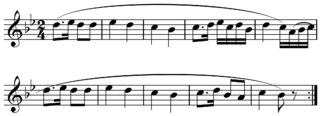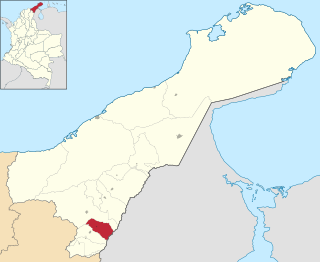Jean Molino is professeur ordinaire at the University of Lausanne and a semiologist. His former students include Jean-Jacques Nattiez.
Jean Molino is professeur ordinaire at the University of Lausanne and a semiologist. His former students include Jean-Jacques Nattiez.
A definition of music endeavors to give an accurate and concise explanation of music's basic attributes or essential nature and it involves a process of defining what is meant by the term music. Many authorities have suggested definitions, but defining music turns out to be more difficult than might first be imagined, and there is ongoing debate. A number of explanations start with the notion of music as organized sound, but they also highlight that this is perhaps too broad a definition and cite examples of organized sound that are not defined as music, such as human speech and sounds found in both natural and industrial environments. The problem of defining music is further complicated by the influence of culture in music cognition.

Inuit throat singing, or katajjaq, is a distinct type of throat singing uniquely found among the Inuit. It is a form of musical performance, traditionally consisting of two women who sing duets in a close face-to-face formation with no instrumental accompaniment, in an entertaining contest to see who can outlast the other; however, one of the genre's most famous practitioners, Tanya Tagaq, performs as a solo artist. Several groups, including Tudjaat, The Jerry Cans, Quantum Tangle and Silla + Rise, also now blend traditional throat singing with mainstream musical genres such as pop, folk, rock and dance music.

Musical analysis is the study of musical structure in either compositions or performances. According to music theorist Ian Bent, music analysis "is the means of answering directly the question 'How does it work?'". The method employed to answer this question, and indeed exactly what is meant by the question, differs from analyst to analyst, and according to the purpose of the analysis. According to Bent, "its emergence as an approach and method can be traced back to the 1750s. However it existed as a scholarly tool, albeit an auxiliary one, from the Middle Ages onwards."
Nicolas Ruwet was a linguist, literary critic and musical analyst. He was involved with the development of generative grammar.

In music, a motif(pronunciation) (help·info) IPA: (/moʊˈtiːf/) is a short musical idea, a salient recurring figure, musical fragment or succession of notes that has some special importance in or is characteristic of a composition. The motif is the smallest structural unit possessing thematic identity.
The Tristan chord is a chord made up of the notes F, B, D♯, and G♯:

In music theory, a phrase is a unit of musical meter that has a complete musical sense of its own, built from figures, motifs, and cells, and combining to form melodies, periods and larger sections.
A phrase is a substantial musical thought, which ends with a musical punctuation called a cadence. Phrases are created in music through an interaction of melody, harmony, and rhythm.

In music, a subject is the material, usually a recognizable melody, upon which part or all of a composition is based. In forms other than the fugue, this may be known as the theme.

Music can be analysed by considering a variety of its elements, or parts, individually or together. A commonly used list of the main elements includes pitch, timbre, texture, volume, duration, and form. The elements of music may be compared to the elements of art or design.

Jean-Jacques Nattiez is a musical semiologist or semiotician and professor of musicology at the Université de Montréal. He studied semiology with Georges Mounin and Jean Molino and music semiology (doctoral) with Nicolas Ruwet.

Simha Arom is a French-Israeli ethnomusicologist who is recognized as a world expert on the music of central Africa, especially that of the Central African Republic. His books include African Polyphony and Polyrhythm: Musical Structure and Methodology (1991) ISBN 0-521-24160-X. He also made some historical field recordings of the Aka Pygmy music.
Esthesic and poietic are terms used in semiotics, the study of signs, to describe perceptive and productive levels, processes, and analyses of symbolic forms. The corresponding terms for the processes are esthesis and poiesis.
In semiotics the neutral level of a sign is the "trace" left behind; the physical or material creation or remains of esthesic and poietic processes, levels, and analyses of symbolic forms. A part of all signs according to a tri-partitional definition, it corresponds to Saussure's "sound-image".
Satz is any single member of a musical piece, which in and of itself displays a complete sense, such as a sentence, phrase, or movement.
Music semiology (semiotics) is the study of signs as they pertain to music on a variety of levels.
The term seriation [mise en série] was proposed for use in semiotics by Jean Molino and derived from classical philology. Seriation "invokes the idea that any investigator, in order to assign some plausible meaning to a given phenomenon, must interpret it within a series of comparable phenomena." One cannot interpret what philology calls a hapax; that is, an isolated phenomenon. Art historian Erwin Panofsky has explained the situation in very clear terms:

El Molino is a town and municipality located in the Colombian Department of La Guajira.

Daniel Diges García is a Spanish singer, pianist, composer and actor. Although born in Madrid proper, he has spent all his youth in the neighbouring city of Alcalá de Henares.
José Matías "Pepe" Navarro González is a Spanish football manager.
Monique Desroches is a Canadian ethnomusicologist from Quebec who specializes in the music of the West Indies and the Mascarene Islands in the Indian Ocean.